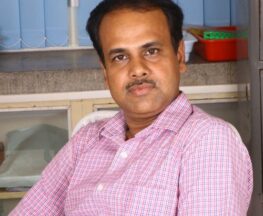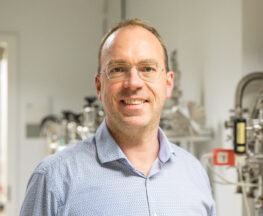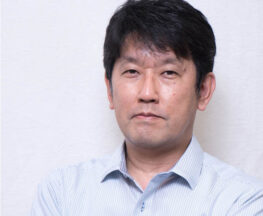Centre of Excellence on Molecular Materials and Functions is one of the clusters of the Indian Institute of Technology Madras (IITM), which is one of the ‘Institute of Eminence,’ launched by the Government of India to empower Higher Educational Institutions and help them become world-class teaching and research institutions.
Our vision is to build a sustainable center with global visibility on molecular matter, focusing on atomically precise clusters and gas hydrates: to seed, nurture, and expand cutting-edge science and technology in respective areas, collectively with the best people across the world, with the involvement of the next generation.
We aim to create a globally recognized centre focusing on the synthesis and study of molecular materials, where the fundamental building blocks are molecules, rather than atoms. They hold considerable academic and technological promise as they offer tunable properties that are relevant for applications. In order to leverage the expertise of the participating groups in a synergistic fashion, we aim to initially specialize in two exciting and important families of molecular materials: those assembled from metallic clusters and those assembled from gas hydrate cages. However, as additional capabilities are established, we will also expand our activities into other kinds of molecular materials, including supramolecular polymers, energy-harvesting assemblies, molecular metals, and molecular magnets. Important strides have already been made in the study of molecular forms consisting of atomically precise metal clusters containing tens to hundreds of atoms; the participating groups have been among the leaders in this area.
The challenge now is to fill in the ‘gap’ between molecules and bulk materials, by achieving clusters of hundreds of kilodaltons and eventually megadaltons of mass. We will synthesize such systems, using novel methods and approaches. By studying the chemical, physical, and mechanical properties of these cluster-assembled solids, it is expected that we will achieve breakthrough results in reactivity, catalysis, electrical transport, magnetism, energy storage, and dissipation. In gas hydrates, our principal effort will be to use the hydrate cages as new molecular containers in which cryogenic chemistry can occur. Elementary processes happening in hydrate cages will be examined with in-situ spectroscopy. These will have immense relevance to molecular evolution in space as well as the utilization of hydrates for gas storage and CO2 sequestration. Alongside the experimental investigations, we will carry out theoretical studies that will shed light on the underlying phenomena and help optimize the properties of these molecular materials. In this way, a new understanding of materials and phenomena will be gained.
To maximize technological relevance, industrial linkages will be strengthened for local and national development. The outstanding team of collaborators, partners, and advisors that has been assembled will guarantee maximum international visibility and impact and further raise the profile of the Institute. Advanced facilities and resources will be created, and next-generation leaders will be trained with greater national and international participation, placing the larger objectives of the IoE as paramount. Thus, the centre will promote local excellence while partnering with the best in the world.
Mass Photometer

Instrument specification
Refeyn TwoMP mass photometer is used to accurately measure the mass of single particles or biomolecules, using a light scattering approach. It can accurately determine the mass of proteins as small as 20kDa. Using this approach, proteins, single particles, and other biomolecules can be characterized to study their function, interactions, oligomerization, and macromolecular assembly. This technique helps to assess sample integrity and homogeneity, in a facile and label-free method. As the instrument can gather data over time, it enables capturing the dynamic behavior of molecules or particles.
Technicalities
Mass photometry is quantitative mass imaging of single macromolecules in their true native state. It uses a light-scattering approach which allows for rapid measurement of the mass of individual proteins or particles. This technique provides high resolution, enabling the detection of low-abundance species, and has a wide working mass range. Using this tool, reliable measurement of molecular mass in the range of 30 kDa to 5 MDa is possible.
Notably, the mass photometry resolution varies across the mass range and can be affected by the composition and quality of a sample.
It is operable in a wide range of buffers. It can measure proteins on lipid bilayers and membrane-mimetic systems as well. For the TwoMP mass photometer, at the lower end of the mass range, the resolution is ± 25 kDa for a measurement of a 66 kDa biomolecule (defined as the Full Width of the peak at its Half Maximum value, FWHM). At the higher end of the mass range, for example, 660 kDa, the resolution is ± 60 kDa FWHM.
Key features of Refeyn TwoMP mass photometer
- Mass range: 30 kDa – 5 MDa
- Mass precision: ±2% or lesser
- Mass error: ±5% or lesser (single measurement)
- Resolution (FWHM): 25 kDa @ 66 kDa and 60 kDa @ 660 kDa
- Concentration range: 100 pM – 100 nM
- Sensitivity: << 1 ng of protein
- Wavelength: 488 nm
- Field of view: 4 x 11 µm (@ 500 Hz) up to 12 x 17 µm (@ 135 Hz)
- Pixel size: 12 nm
Theory of operation
The mass photometry, a tool for “watching protein’s weight,” carefully measures light scattering and provides information on the mass of macromolecules and complexes. Unlike other light-based techniques, the mass photometry signal measured is directly correlated with the true molecular mass, enabling measurement of the mass of molecules in the range of 30 kDa to 5 MDa. The unlabeled single particles are adsorbed from the solution to a glass surface, and light is incident on it. The light scattered by a single particle at the glass-water interface is measured with potential sensitivity to obtain accurate mass. Nanoparticle aggregates, single particles, nanostructures. vesicles, polymers, biomolecules in their native state, such as nucleic acids, and viruses can be measured at a high resolution.
D8 Venture Single Crystal X-Ray Diffractometer

Instrument specification
Bruker Single Crystal X-ray Diffractometer (SCXRD), D8 Venture with Photon III C14 detector, is used to determine three dimensional crystal structures. It is equipped with two micro-focus X-ray sources (Cu and Mo radiation) providing a choice of two wavelengths, for measuring patterns in very small crystals. Powder diffraction of capillary samples can also be obtained. Grazing incidence measurements can also be made. Different cooling systems are available, enabling low temperatures such as 100 K.
Technicalities
Bruker SCXRD D8 Venture provides a high intense strongest X-ray source, with highly reliable largest X-ray detectors. With more room for rotating anode, liquid metal jet, and dual wavelength solutions, this instrument provides high versatility and flexibility to the user. The IμS Microfocus Sources yield Mo 0.71 Å and Cu 1.54 Å. The Mo radiation helps in high throughput and electron density measurements, and the Cu radiation provides absolute configuration determination of lightweight molecules.
Key features of D8 Venture SCXRD
- Flux density: 6 × 10¹¹ X-rays/mm2s
- X-ray sources: IµS 3.0 and IµS DIAMOND microfocus, METALJET liquid metal
- Active area: up to 280 cm2
- Anode: Microfocus TXS Rotating Anode
- Goniometer: FIXED-CHI or KAPPA, for completeness and multiplicity
- Software and data processing: APEX5 and PROTEUM3
- Low temperature range: Cryostream (liquid nitrogen) and COBRA (non-liquid nitrogen)
Theory of operation
A crystal has a pattern of unit cells repeated in a three-dimensional lattice. Upon X-rays incident on the crystal lattice, it behaves like a diffraction grating, producing a diffraction pattern. A beam of parallel monochromatic X-rays of a specific wavelength is used to obtain this diffraction. The analysis of this diffraction pattern leads to the structure and shape of the lattice units. With the phase angles and a good fit between experimental and calculated diffraction patterns.
Q Exactive Ultra High Mass range (UHMR) Hybrid Quadrupole-Orbitrap mass spectrometer

Instrument specification
The Thermo Scientific Q Exactive UHMR hybrid Quadrupole-Orbitrap mass spectrometer combines in-source trapping, high-performance quadrupole precursor ion selection, a higher-energy collisional dissociation (HCD) cell, and a high-resolution, accurate-mass (HRAM) Orbitrap mass analyzer, with optimized RF voltages for improved high mass ion transmission to provide unrivaled sensitivity and resolution in the ultra-high mass range.
Technicalities
- Ultra-high mass range up to m/z 80,000.
- Quadrupole isolation up to m/z 25,000 for Selected Ion Monitoring (SIM), MS/MS and pseudo-MS3 experiments.
- Resolution up to 200,000 (FWHM) at m/z 400.
- In-source trapping for higher transmission and better desolvation.
- Advanced Quadrupole Technology (AQT) for superior precursor isolation.
- Advanced Active Beam Guide (AABG) for greater sensitivity and maximum robustness.
Operation modes
- Full MS with high resolution, accurate mass detection
- SIM with high resolution, accurate mass detection
- All Ion Fragmentation (AIF) using in-source CID, in-source trapping or HCD
- MS/MS and pseudo-MS3 of isolated ions with high-resolution, accurate mass detection
Schematic of the Q Exactive UHMR

Theory of operation
The Q Exactive UHMR mass spectrometer provides the ability to perform pseudo-MS3 for native top-down analysis and transmission of very high m/z ions through the implementation of both hardware and software enhancements. The most important of these enhancements were pulsed trapping of ions in the injection flatapole region, a process called “in-source trapping,” for the reduction of the frequency of RF voltages applied to the injection and bent flatapoles, quadrupole, transfer multipole, C-trap, and HCD cell. In-source trapping allows controllable, and highly efficient desolvation of large ions, and also the optional application of energy to dissociate these ions into subunits in the injection flatapole region prior to their release for subsequent mass analysis, including pseudo-MS3 analysis. The reduced RF voltages increase the efficiency of high m/z ion transfer and utilization, delivering high sensitivity, with low sample volume requirements. Multiple charged ions are detected with such efficiency that individual ions can be detected within milliseconds, providing the ultimate analytical sensitivity needed for minute sample volumes. Other developments include gas pressure control, an increase in the maximum HCD energy from 200 to 300 V, and an adjustment of the voltage ramp rate of the Orbitrap mass analyzer, which facilitates transmission of very high m/z ions from the C-trap into the Orbitrap mass analyzer.
Other facilities available at DST unit on nanoscience and Thematic unit of excellence are:
Molecular materials are exquisitely recognized as molecules in their own right, adept for a myriad of applications owing to their unique functions, creating a new branch of science that is exciting and enriching.
Our focus on molecular materials, where the fundamental building blocks are molecules, rather than atoms, is primarily on the following:
(a) atomically precise metallic clusters (nanoclusters) and
(b) gas hydrate cages.
Their chemistry, assembly, and unique properties are investigated, opening a wide range of possibilities in this field (such as molecular metals and molecular magnets) which can be harnessed in the laboratory for using these molecular materials as functional architectures, detectors in sensing harmful species, powerful catalysts in important chemical reactions such as in solar fuels and ginormous storage-carriers for small molecules like CO2.
Important strides have already been made in the study of atomically precise metal clusters containing tens to hundreds of atoms. Huge clusters are expected to have very different properties compared to molecules and bulk materials.
With respect to gas hydrates, molecular cages containing CO2, CH4, etc are studied by our group.
We are building a dedicated team of CoE scientists and fellows, along with enthusiastic students, who will help establish and pursue our objectives. Our team is a strong collaboration of eminent leaders in the field, at the national and international levels. We welcome networking among diverse partnerships for strengthening local and national development. These materials will shape the future of scientific research and industrial development (reactivity, catalysis, electrical transport, magnetism, water harvesting, and energy storage, and molecular containers in cryogenic chemistry).
 Search
Search Sign in
Sign in
1-scaled-e1696829094960-263x216.jpg)















































 Total views : 236784
Total views : 236784